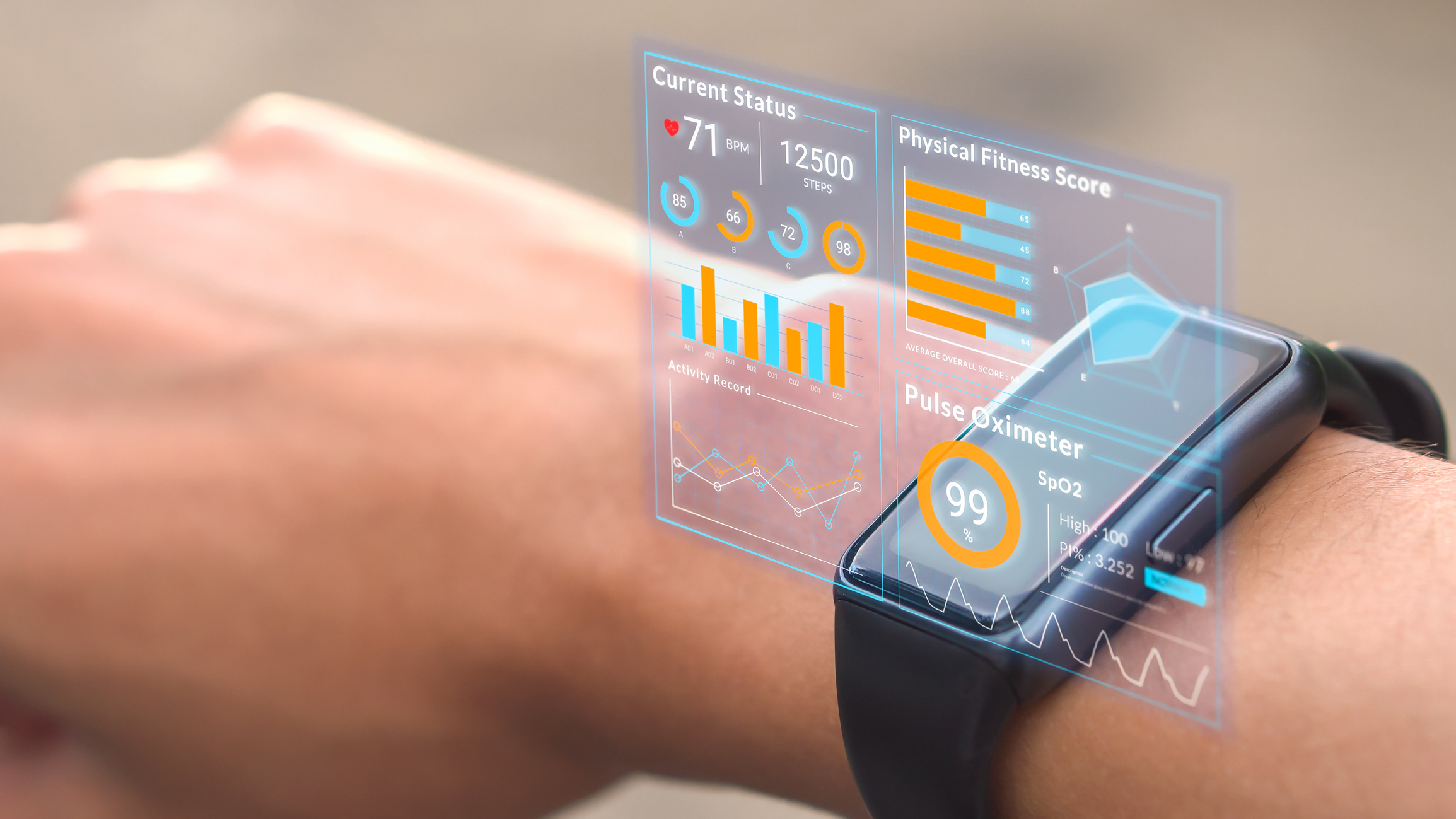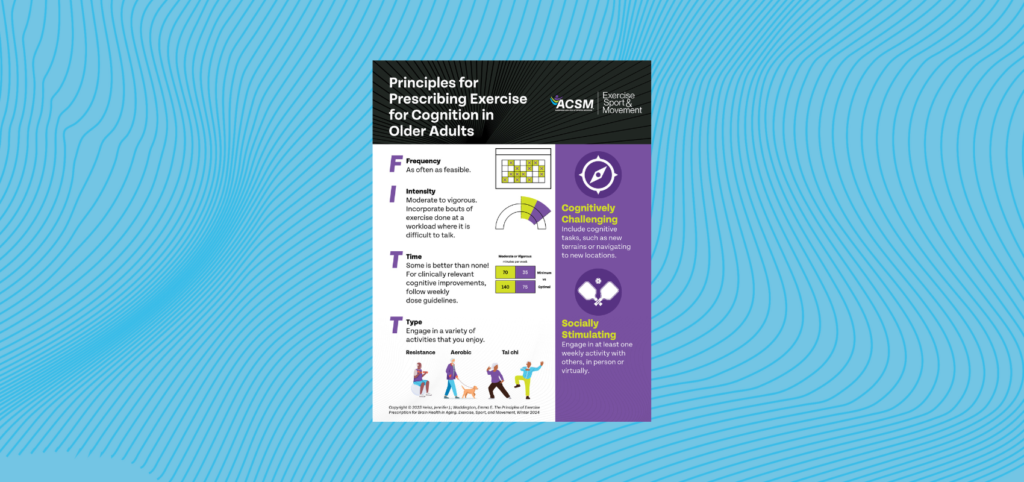As we brush the dust of 2023 from our shoulders and look around, wondering what the heck we should be doing with ourselves in ’24, a beacon appears:
On Jan. 2, ACSM released the results of the 2024 Worldwide Fitness Trends: Future Directions of the Health and Fitness Industry survey, and we picked up on some interesting signals.
What do they suggest? We’ll get there in a sec. First, let’s go over what the survey is and does.
Begun in 2006, the survey polls members of the fitness community from around the world to predict the trends that will characterize the industry for the next year — useful intel for studios, facilities, and individual fitness professionals looking to make timely investments in equipment, training and certifications.
For the 2024 edition, just shy of 2,000 people completed the survey; more than one-fifth of the respondents were personal trainers, and the majority had from one to nine years’ experience working in the health and fitness space.
This year, the survey provided respondents with 45 possible trends organized into eight thematic categories: “exercise setting,” “fitness business model,” “medical fitness,” “special populations,” “training modalities,” “digital technology,” “programming” and “recovery based therapies.” Respondents then chose the top 20 trends, the top ten of which are listed below:
- Wearable Technology
- Worksite Health Promotion
- Fitness Programs for Older Adults
- Exercise for Weight Loss
- Reimbursement for Qualified Exercise Professionals (QEPs)
- Employing Certified Exercise Professionals
- Mobile Exercise Apps
- Exercise for Mental Health
- Youth Athletic Development
- Personal Training
But what, practically speaking, can we take away from these results? Let’s talk top three.
No. 1: Wearable Technology

First, barring some massive, grid-destroying disaster, Wearable Technology will likely only continue in its popularity. In fact, Wearable Technology has taken the No. 1 spot nearly every year since 2016 (in 2018 it was No. 3, and in 2021 it was No. 2). This staying power probably reflects, on the one hand, the ever-increasing sophistication of these devices — smartwatches, heartrate monitors, sleep trackers, fitness trackers, etc. — and on the other the medical and fitness community’s increasing ingenuity when it comes to determining what to do with the data they provide.
Which is to say, it can take a while for people to realize the full impact of a new technology, and for new modes of thinking to develop in order to best make use of it. Taking the time to study first the tech itself and second the way other people are using it will give you a better picture of how to implement wearables in your practice, whether that’s tracking a client’s heart rate over time or logging the total steps in each of their workouts. Be careful, though, not to tread into the territory of a medical professional (unless you are one). The thorough monitoring power of these devices might be tempting, so be cautious about how in-depth you get when it comes to tying their data to exercise prescription and progress. And of course it goes without saying that the client must be on board with all of this tracking.
Last, your milage may vary depending on the region you’re in and the age of your clientele. Tech tends to percolate into wealthier areas first, and the younger generation is more likely to use it — though this may not remain the case as older people begin to see the potential benefit of tracking their health in real time.
If you want to explore further, this 1 CEC course based on the 2023 Annual Meeting lecture sing Wearable Sensors and Big Data to Identify Digital Biomarkers in Sleep, Health, and Exercise Performance can provide some intriguing insights into the possibilities wearable tech opens up.
No. 2: Worksite Health Promotion
For its part, Worksite Health Promotion came in at No. 2 this year, which may perk up the ears of those interested in offering their services to businesses or other entities. It’s possible that this up-ranking of worksite health is in some way a reaction to the COVID-19 years and the remote working environment; whether it’s merely a renewed focus on health in all aspects of life after many of us were stranded at home cultivating bad habits, a reaction to mass illness, or an attempt to make a return to in-office expectations a little less bitter, it’s hard to say. Regardless, partnering with a corporation or association to provide its employees with fitness and wellness programming will have advantages and disadvantages, and these will of course depend on each individual org. That said, gaining in one fell swoop a set of clients who are all in one place and are likely going to be available at relatively predictable times could be a great opportunity and a source of stability in your business.
To drive the point home — the CDC claims that the average full-time American worker is going to spend about one-third of their life in the workplace. Fitness always competes for time with other obligations, so getting a foot in the door in this otherwise off-limits 33.33% of your clients’ lives could be a huge win.
If you want to learn more about the world of Worksite Health Promotion, check out this 3 CEC ACSM course featuring the experiences of five worksite wellness professionals.
No. 3: Fitness Programs for Older Adults
The placement of Fitness Programs for Older Adults in the No. 3 slot probably comes as no surprise. The aging population in the U.S. continues to grow; according to the 2021 Profile of Older Adults, the time period from 2010 to 2021 saw a 38% increase in the cohort of people age 65 and older. Further, the Trends authors note that this increase is likely to continue through 2040. To put it simply, more and more of your potential clients are going to be older people rather than younger people, so specializing in the unique needs of this group is probably a good bet. As we age, we see our risk of developing numerous illnesses increase apace — so too the incidence of cognitive impairment and the chance of having a fall. This, of course, is where fitness professionals come in. Aerobic and strength training keep some of the impacts of disease at bay, help people remain independent, and improve their quality of life.
Practically speaking, the ACSM Exercise is Medicine® Credential might be a good option to pursue if you’re looking to demonstrate relevant skills for this population. From the ACSM website: “Exercise professionals who earn the Exercise is Medicine® (EIM) Credential demonstrate their ability to help individuals with common chronic diseases lead healthier, more active lives. They are also more likely to be seen as a trusted referral resource by health care providers.” This combination will be of the utmost utility when working with older adults.
Bits and Bobs
Though we’ve focused on the top three takeaways from the 2024 results, there’s still a lot to learn from the remaining seven.
No. 4, Exercise for Weight Loss, reminds us why the majority of clients seek out fitness pros’ services. Though the concept of wellness is growing in its cultural impact, plenty of people still just want to lose weight. It’s good to keep that perspective in mind — when the rubber meets the road, people probably remain more interested in shedding pounds than adopting a whole new lifestyle. Give the people what they want.
No. 5, Reimbursement for Qualified Exercise Professionals (QEPs), represents the tip of the iceberg in an interesting ACSM story. For some time, ACSM and its partner organizations have been pushing for the expansion of “current procedural terminology” or “CPT” codes to include fitness-related services as well as the recognition of fitness pros as “qualified exercise professionals,” or “QEPs.” Health care providers use CPT codes, maintained by the American Medical Association, to characterize the services they provide and more easily bill insurance, and getting qualifying fitness professionals classed as QEPs increases the likelihood that they’ll be allowed to use such codes. This two-pronged approach, then, is intended to make it easier for fitness professionals to get paid for their services. Given the importance of physical activity to overall health, this is a crucial step both for fitness pros and patients. (More about current physical activity CPT codes.)
No. 6, Employing Certified Fitness Professionals, goes hand in hand with No. 5. Ensuring that the fitness professionals we hire adhere to the highest standards of care and practice makes sense both for businesses and for the clients they serve.
No. 7, Mobile Exercise Apps — this trend seems closely aligned with Wearable Tech. Fitness trackers and other phone- or watch-based applications may help people get the most out of their workouts, allowing them to better plan their activity, give them reminders to keep after a program, or offer other features to streamline the fitness experience. Take a look at this study on the efficacy of mobile apps in weight loss.
No. 8, Exercise for Mental Health — no surprise here. People aren’t doing well in the world we’ve created and exercise can help reregulate our emotions. This trend reminds us that the clients who seek us out might be looking to treat injuries we can’t see. Kindness, and checking in to see how people are doing, can go a long, long way. You can explore more of the connections between exercise and mental health in this 1 CEC course based on the 2023 ACSM Annual Meeting lecture “The Mental Health Crisis: The Impact of Exercise and the Environment on Psychobiological Function.”
No. 9, Youth Athletic Development. Though the aging population is growing, we can’t forget young people. Childhood and adolescence are critically important times for developing fitness habits and overall physical health and strength. Fortunately, the National Youth Sports Health & Safety Institute (NYSHSI), a partnership between ACSM and Sanford, recently launched a podcast focused on healthy youth sports. Check it out! ACSM and NYSHSI are also launching the Youth Fitness Specialist Certificate. Stay tuned.
No. 10, Personal Training. When it comes to keeping people healthy and getting them to progress, you really can’t beat one-on-one coaching. Personal training still has an important role to play, no matter what trends or technologies come and go.
Wrapping It Up
The 2024 trends present an interesting glimpse into the future of the fitness industry. In the main, keep an eye on Wearable Tech, Workplace Health Promotion, and Fitness Programs for Older Adults. These are the trifecta at the top for the coming year, and making business decisions around them could have a real impact over the next few quarters. But also look out for updates on Reimbursement for Qualified Exercise Professionals (QEPs); this one is already at No. 5, and I suspect it will only become more important as time goes on. Whether that’s in 2024 or in later years, it’s a good trend to keep pace with. Its impact on this space, as it builds up steam, will probably be significant.
Learn more by visiting the 2024 Worldwide Fitness Trends: Future Directions of the Health and Fitness Industry on the ACSM website.




